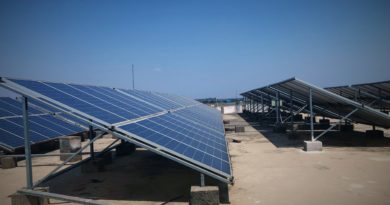Mini-Grid Success – Needs a Right Strategy
Mini-Grid Power Plant based on clean energy sources is being considered as the most sought-after solution to alleviate energy poverty in India and thereby increasing the socio-economic development. The proof is that several new initiatives are coming up to execute Mini-Grids across India even though the Main-Grid has reached to 100% areas officially. Tata Power and The Rockefeller Foundation have come together to form TP Renewable Microgrid with the mandate of setting up 10000 Mini-Grids by 2026. Seems impractical in the country where Grid has already covered 100% but possible with the right strategy.
According to the January 2017 report of the Electricity Supply Monitoring Initiative (ESMI), only 16% of the monitoring locations in rural areas had the full six hours of power supply during peak evening hours. It was also observed that even when the power was available the voltage level remained well below the normal range. Low voltage, frequent interruptions, and Load shedding is a concern for electricity consumers in India and these are also considered as poor power quality. This compels the consumers to invest in alternative/backup power to meet the power requirements and mostly based on polluting conventional energy sources. All these areas are the potential for Mini-Grids. Now, there are areas where parallel existence of both the Mini-Grid and Main-Grids are evident. Even the consumers had also a preference for Mini-Grids over centralized/ Main-Grid because of more reliable and quality power.
With all these reasons, the Mini-Grids are considered inevitable. Now the question arises- Can it be successful simply? The answer is Possible only with right Strategy.
This article explains some of the key steps need to be taken into consideration.
- Local Service Providers/ Energy Service Companies (ESCO) – the presence of the local ESCOs which are mainly SMEs or part of a big corporate and involved in key services like design, engineering, execution, community mobilization, O&M, etc.
- Load – Rural Energy demand has been increasing up the energy ladder; people with more income have demand for TV, Fridge, Air conditioning that is a shift from normal light and fan only load as before. Also, there has been a demand for energy to meet various livelihood options. All these demands can be met by reliable Mini-Grid operations: 10 to 50 kW solar, biomass, hydro or hybrid.
- Quality of the infrastructure- Mini-Grid infrastructure should be of the highest quality so that Main- Grid can utilize it in the future with a business partnership. There are evidences of poor-quality materials used by the Mini-Grid operators.
- Association with the Big corporates- it is always better to explore the possibility of associating with Big corporates which may supply plant equipment, software or be an experienced EPC.
- Stakeholders like local NGO/ Social Enterprise with Community development approach is also important to have the business successful.
- Sources of energy: Solar, biomass, biogas, wind, hydro, etc. are possible but solar energy-based system with an inverter to produce grid quality AC power is most technically suitable as in other cases some alterations of the systems may be needed.
- Last but not least is the Integration of both Mini-Grid and Main-Grid- Integration will help to complement one another to meet this ever-increasing energy requirement and Mini-Grid based business a success. The below mentioned five (05) models of interconnections can be explored –
- Parallel Operations -where both the mini-grid and the grid operates, and customers may have both connections.
- Interconnection with parallel Grid- Mini-grid only exports the excess power generated from its mini-grid customers to the main grid.
- Interconnection with full Export – ESCO becomes an independent power producer (IPP) and exports its entire power generation to the main grid.
- Interconnection with Import- ESCO becomes a bulk customer of the larger utility and imports some part of power supplied.
- Interconnection with import – Mini-Grid PDN- The utility assumes control over the ESCO’s primary distribution network (PDN), either by purchasing or franchising the Mini-Grid company.
References:-
[1]. http://prayaspune.org/peg/publications/item/61-electricity-supply-monitoring-initiative.html
[2].Beyond off-grid- integrating mini-grids with India’s evolving electricity system by Okapi Research & Advisory



